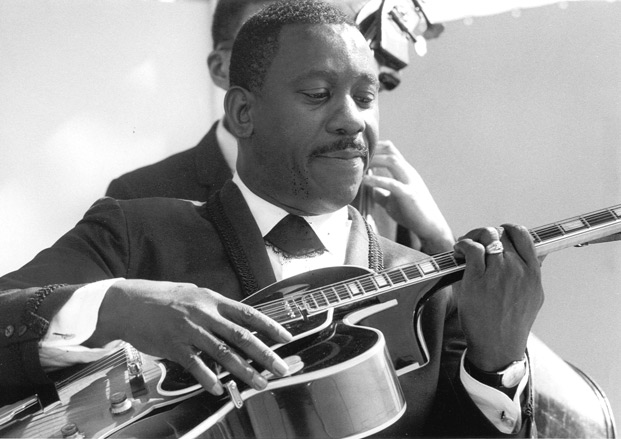Three Essential Jazz Guitar Chord Soloing Lines
Study three jazz chord soloing lines that will bridge the gap between your study of chord shapes and applying those shapes to a real, musical situation.

One of the most common roadblocks many jazz guitarists face is that after learning your essential chord shapes, how do you take those inversions and make them into cool-sounding jazz chord lines?
While learning chord shapes is important—since it builds an understanding of jazz harmony and the fretboard in your studies—studying classic jazz guitar chord lines is the next step in turning these chord shapes into music. In this lesson you’ll study three essential jazz guitar chord soloing lines that will bridge the gap between your study of chord shapes and applying those shapes to a real, musical situation.
- The lines are written out in one key, so make sure to transpose them in your practice routine as well as work them at different tempos in your practice routine. Once you can play these three lines from memory, in a number of keys, try writing out three chord lines of your own over the same progressions as you begin to create your own jazz guitar chord soloing phrases in the woodshed.
To begin your study of these three chord soloing lines, here is a phrase that is used to outline a turnaround progression in the key of G major.
The line itself is pretty straight forward, but notice how the G#dim7 chord uses a few diatonic notes to run up the fretboard over that part of the tune. When playing dim7 chords on the guitar, you can take any note in that chord shape and raise it by 2 frets to reach the next diatonic note over that chord. You can see this in action as the Ab moves to Bb and B moves to Db(C#) over the second half of the first bar in the line.
Jazz Guitar Chord Soloing Line 2
In this minor ii-V-I chord soloing line you will be using a number of different E7alt shapes as you navigate the chord changes. Notice how the E7 chord is in the second bar of the progression, but that the chord soloing line begins to outline that chord three beats earlier, in beat 2 of the first bar. This is a common technique used in jazz guitar lines, where you are anticipating the next chord as you apply it to the previous chord in the progression.
Lastly, there is an F7#9 chord at the end of the first bar that adds a bit of tension as you move up and back by a half step from E7-F7-E7 in that part of the line. This type of chord line is often used to create tension, as the F7 is tense over the E7, which you then resolve when you bring the line back to the original chord, in this case E7alt.
Jazz Guitar Chord Soloing Line 3
Here's a ii-V-I chord line that move up and down the fretboard as you navigate the changes, Gm7-C7-Fmaj7. Notice the use of a triad pair over the Gm7 chord, where you are playing Bb and C triads over that chord. When playing over m7 chords, you can use major triads from the bIII and IV of that underlying chord, which highlight the intervals b3-5-b7 and 11-6-R respectively. There's also a b9 used over the C7 chord that creates a bit of tension before resolving it down to an Fmaj7 chord to end the phrase in bar 3 of the line.
Matt Warnock is the owner of mattwarnockguitar.com, a free website that provides hundreds of lessons and resources designed to help guitarists of all experience levels meet their practice and performance goals. Matt lives in the UK, where he is a senior lecturer at the Leeds College of Music and an examiner for the London College of Music (Registry of Guitar Tutors).
Get The Pick Newsletter
All the latest guitar news, interviews, lessons, reviews, deals and more, direct to your inbox!
Matt Warnock is the owner of mattwarnockguitar.com, a free website that provides hundreds of lessons and resources designed to help guitarists of all experience levels meet their practice and performance goals. Matt lives in the UK, where he teaches Skype guitar students all over the world, and is an examiner for the London College of Music (Registry of Guitar Tutors).







![Joe Bonamassa [left] wears a deep blue suit and polka-dotted shirt and plays his green refin Strat; the late Irish blues legend Rory Gallagher [right] screams and inflicts some punishment on his heavily worn number one Stratocaster.](https://cdn.mos.cms.futurecdn.net/cw28h7UBcTVfTLs7p7eiLe.jpg)


